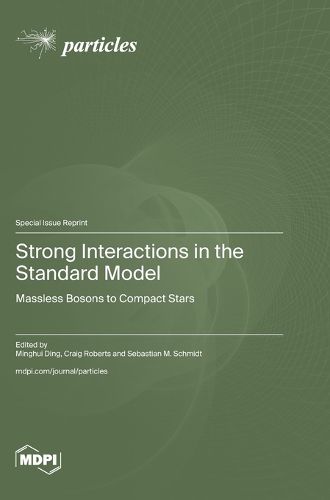Readings Newsletter
Become a Readings Member to make your shopping experience even easier.
Sign in or sign up for free!
You’re not far away from qualifying for FREE standard shipping within Australia
You’ve qualified for FREE standard shipping within Australia
The cart is loading…






This title is printed to order. This book may have been self-published. If so, we cannot guarantee the quality of the content. In the main most books will have gone through the editing process however some may not. We therefore suggest that you be aware of this before ordering this book. If in doubt check either the author or publisher’s details as we are unable to accept any returns unless they are faulty. Please contact us if you have any questions.
The Standard Model of particle physics (SM) was formulated roughly fifty years ago; and with discovery of the Higgs boson at CERN in 2012, it became complete. Yet, despite the SM's enormous body of successes, it still presents an array of unsolved problems. Primary amongst them is the following question: Can the SM explain the origin of nuclear size masses? This is the puzzle of emergent hadron mass (EHM), whose solution is supposed to lie within quantum chromodynamics (QCD). EHM could provide the unifying explanation for all the SM's remarkable nonperturbative phenomena, including confinement and absolute stability of the proton, the proton's mass and radii, the lepton-like scale of the pion mass and its hadron-like radius, and so much more, running up to the character and composition of dense astrophysical objects. As a source of mass, EHM interferes constructively with a range of Higgs boson e?ects. For instance, such feedback sets the kaon apart from the pion and separates heavy quark systems from those containing only light quarks. Presented with such a plethora of interrelated phenomena, whose implications reach throughout Nature, the World has responded with huge investments of personnel and resources in strong interaction experiment and theory. Re?ecting the scope of associated endeavours, this volume collects a diverse range of perspectives on the problem of EHM, its observable manifestations, and the approaches and tools that are today being employed to deliver an insightful understanding and, perhaps, finally, a solution.
$9.00 standard shipping within Australia
FREE standard shipping within Australia for orders over $100.00
Express & International shipping calculated at checkout
This title is printed to order. This book may have been self-published. If so, we cannot guarantee the quality of the content. In the main most books will have gone through the editing process however some may not. We therefore suggest that you be aware of this before ordering this book. If in doubt check either the author or publisher’s details as we are unable to accept any returns unless they are faulty. Please contact us if you have any questions.
The Standard Model of particle physics (SM) was formulated roughly fifty years ago; and with discovery of the Higgs boson at CERN in 2012, it became complete. Yet, despite the SM's enormous body of successes, it still presents an array of unsolved problems. Primary amongst them is the following question: Can the SM explain the origin of nuclear size masses? This is the puzzle of emergent hadron mass (EHM), whose solution is supposed to lie within quantum chromodynamics (QCD). EHM could provide the unifying explanation for all the SM's remarkable nonperturbative phenomena, including confinement and absolute stability of the proton, the proton's mass and radii, the lepton-like scale of the pion mass and its hadron-like radius, and so much more, running up to the character and composition of dense astrophysical objects. As a source of mass, EHM interferes constructively with a range of Higgs boson e?ects. For instance, such feedback sets the kaon apart from the pion and separates heavy quark systems from those containing only light quarks. Presented with such a plethora of interrelated phenomena, whose implications reach throughout Nature, the World has responded with huge investments of personnel and resources in strong interaction experiment and theory. Re?ecting the scope of associated endeavours, this volume collects a diverse range of perspectives on the problem of EHM, its observable manifestations, and the approaches and tools that are today being employed to deliver an insightful understanding and, perhaps, finally, a solution.